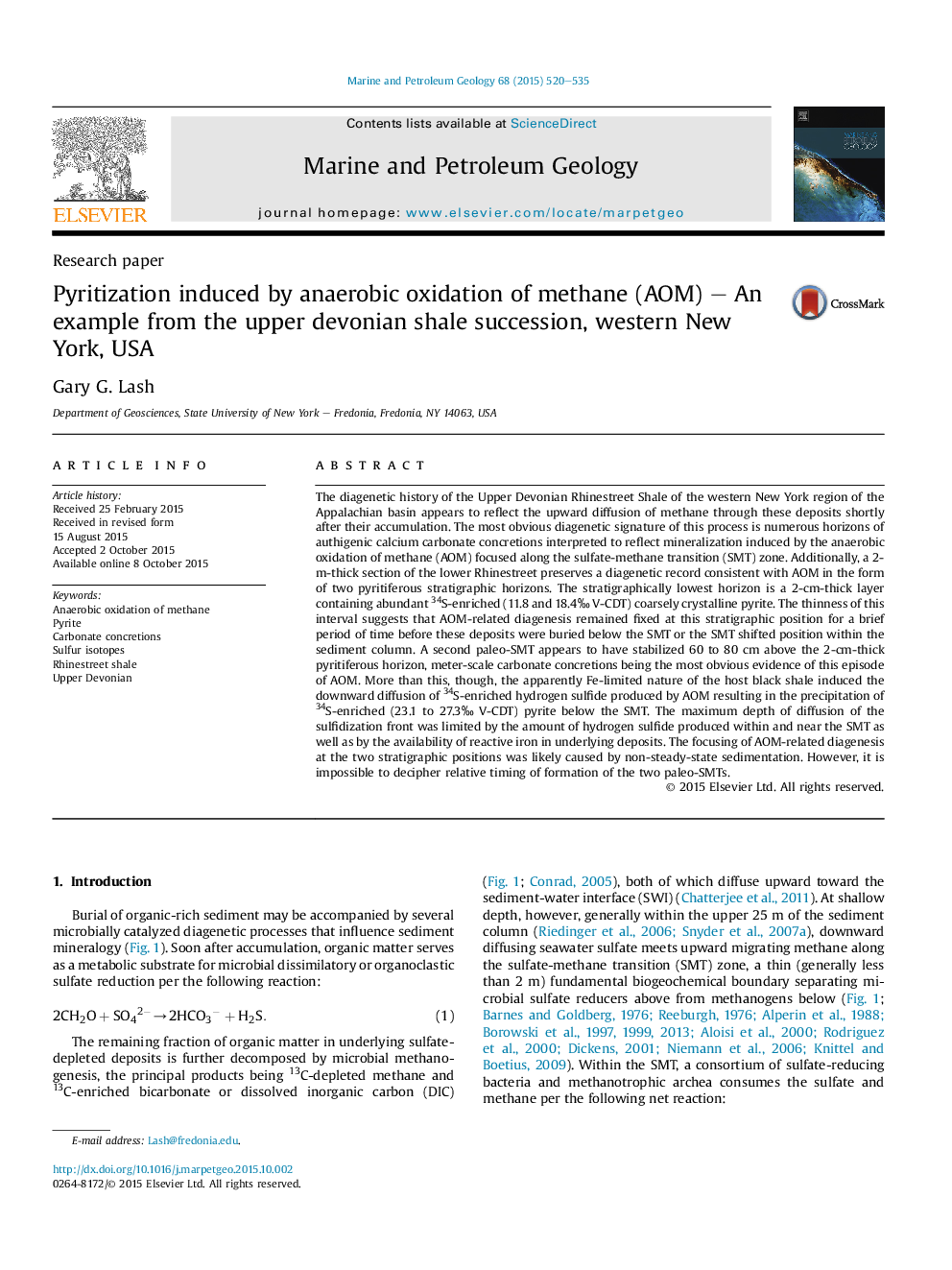| کد مقاله | کد نشریه | سال انتشار | مقاله انگلیسی | نسخه تمام متن |
|---|---|---|---|---|
| 6435118 | 1351611 | 2015 | 16 صفحه PDF | دانلود رایگان |

- 34S-enriched pyrite is found in the Rhinestreet Shale, Devonian, western New York.
- Pyrite formed in association with authigenic carbonate concretions.
- The pyrite and carbonate may have formed as a result of anaerobic oxidation of methane (AOM).
- Fe-limited sediment favors the outward diffusion of hydrogen sulfide produced by AOM.
- Diffusion of hydrogen sulfide can lead to pyritization of organic-lean deposits.
The diagenetic history of the Upper Devonian Rhinestreet Shale of the western New York region of the Appalachian basin appears to reflect the upward diffusion of methane through these deposits shortly after their accumulation. The most obvious diagenetic signature of this process is numerous horizons of authigenic calcium carbonate concretions interpreted to reflect mineralization induced by the anaerobic oxidation of methane (AOM) focused along the sulfate-methane transition (SMT) zone. Additionally, a 2-m-thick section of the lower Rhinestreet preserves a diagenetic record consistent with AOM in the form of two pyritiferous stratigraphic horizons. The stratigraphically lowest horizon is a 2-cm-thick layer containing abundant 34S-enriched (11.8 and 18.4â° V-CDT) coarsely crystalline pyrite. The thinness of this interval suggests that AOM-related diagenesis remained fixed at this stratigraphic position for a brief period of time before these deposits were buried below the SMT or the SMT shifted position within the sediment column. A second paleo-SMT appears to have stabilized 60 to 80Â cm above the 2-cm-thick pyritiferous horizon, meter-scale carbonate concretions being the most obvious evidence of this episode of AOM. More than this, though, the apparently Fe-limited nature of the host black shale induced the downward diffusion of 34S-enriched hydrogen sulfide produced by AOM resulting in the precipitation of 34S-enriched (23.1 to 27.3â° V-CDT) pyrite below the SMT. The maximum depth of diffusion of the sulfidization front was limited by the amount of hydrogen sulfide produced within and near the SMT as well as by the availability of reactive iron in underlying deposits. The focusing of AOM-related diagenesis at the two stratigraphic positions was likely caused by non-steady-state sedimentation. However, it is impossible to decipher relative timing of formation of the two paleo-SMTs.
Journal: Marine and Petroleum Geology - Volume 68, Part A, December 2015, Pages 520-535